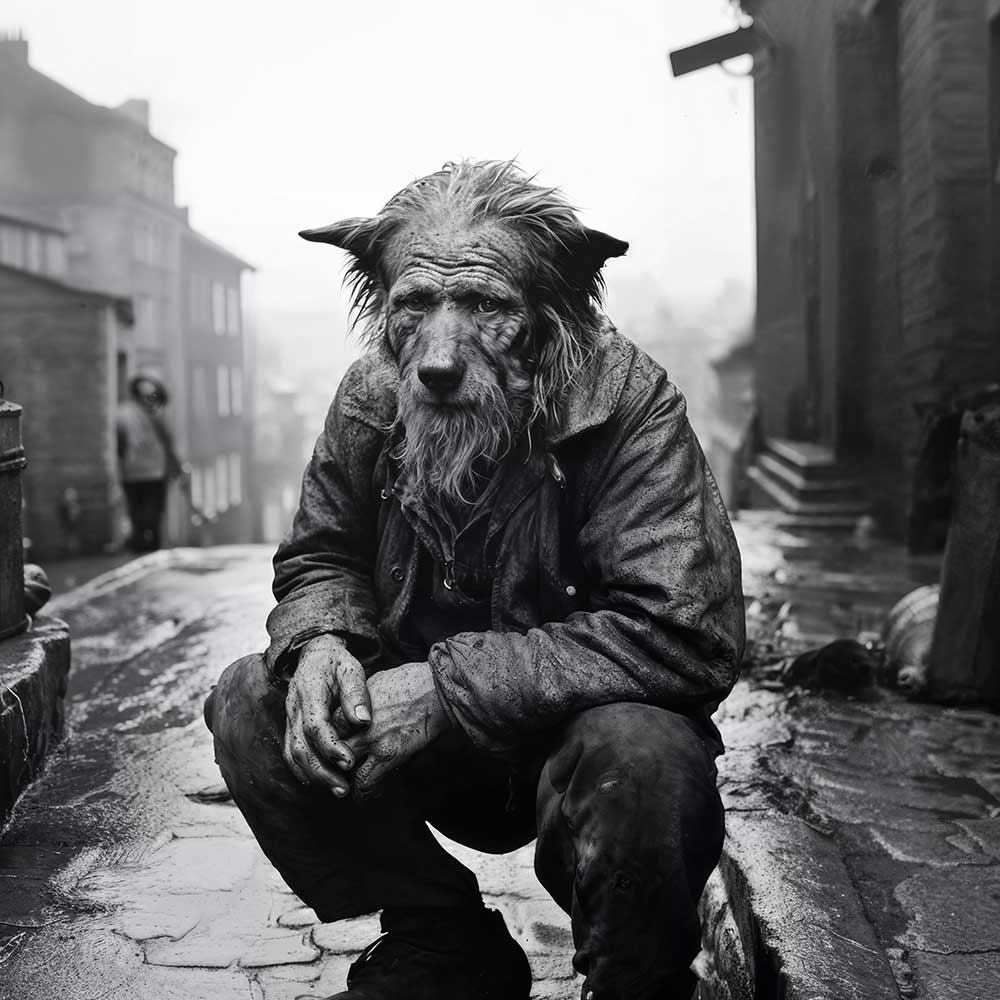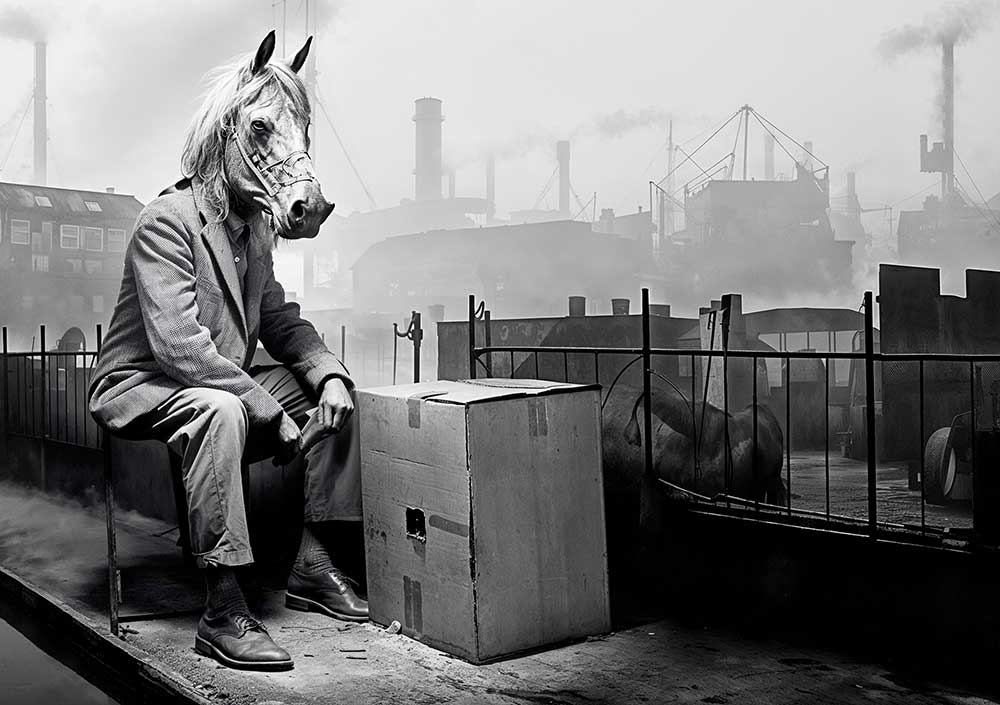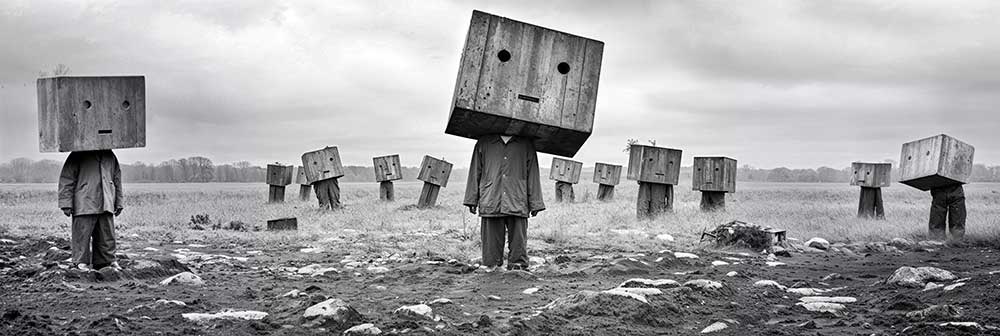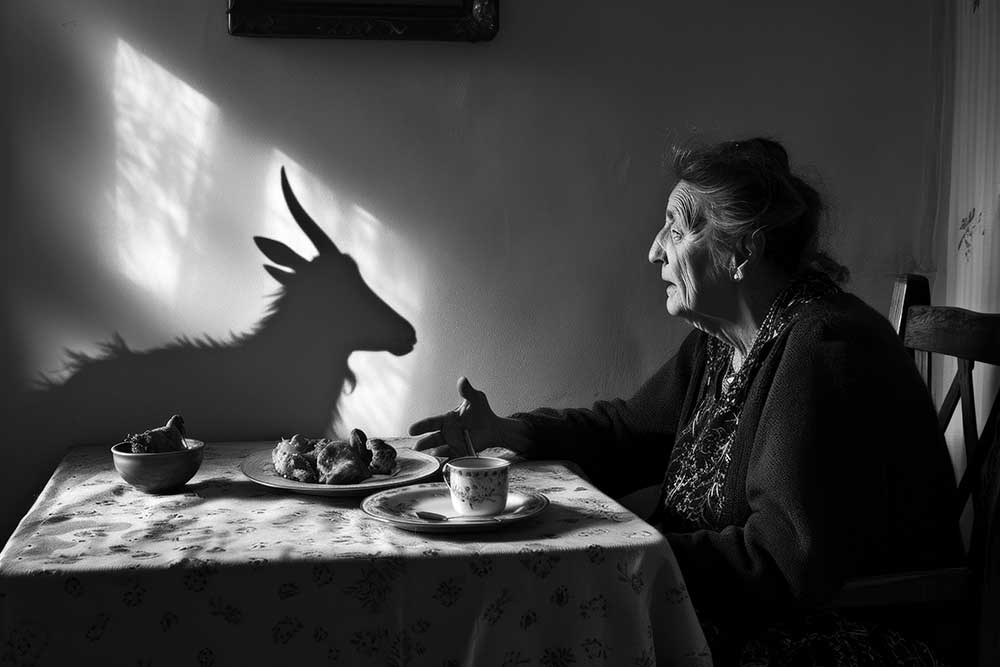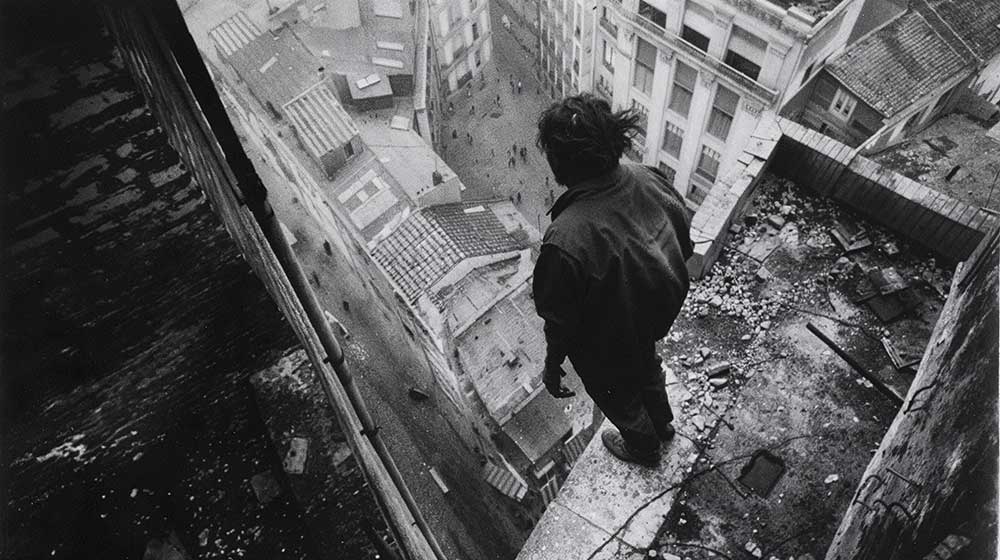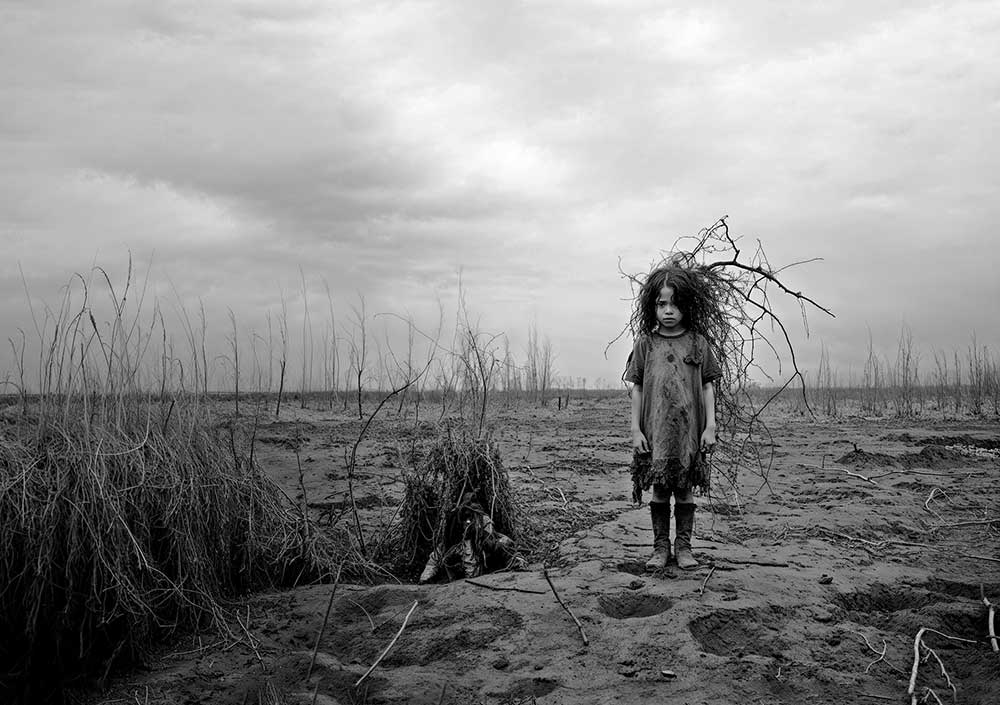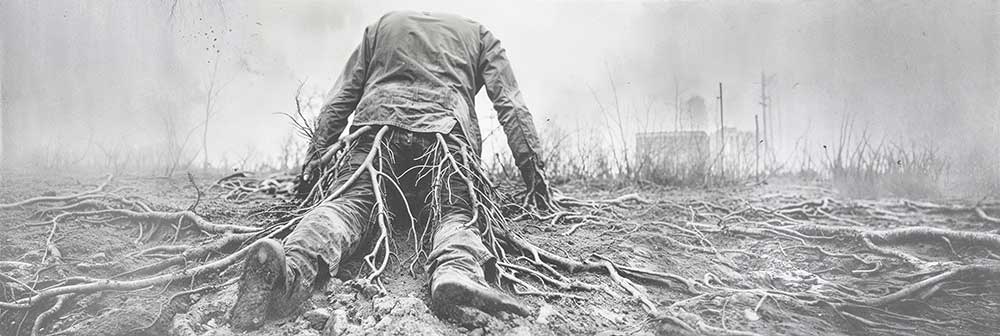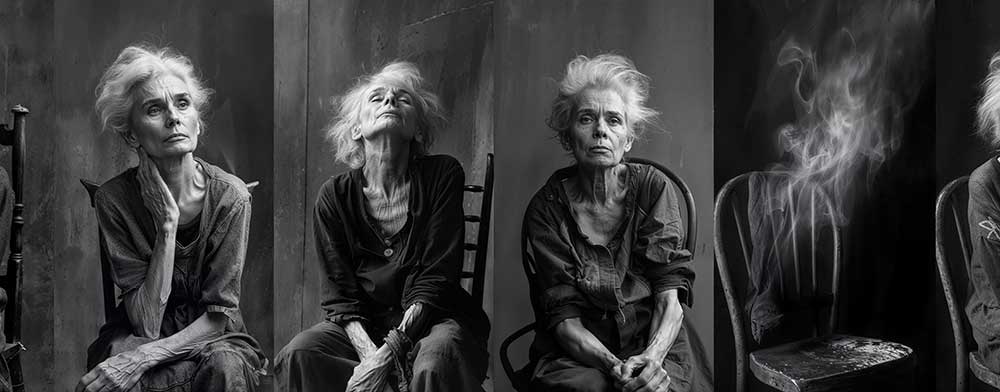It all started five years ago, when they coincided in a swimming course for early risers. After a few lessons, Niko, Adriana and the other classmates decided to treat themselves and, at the end of the class, they started having breakfast together at the Alhóndiga bar in Bilbao.
At these breakfasts they talked about everything, surfing in the universe of current events and sometimes delving into specific topics. Adriana brought to the table her admiration for Baricco, for “Oceano Mare” and for the Almayer guest-house as a surreal meeting point for stories and the sea as an existential metaphor. Niko began to share the images he was creating with artificial intelligence for his first book, “Make Bilbao grAI again”, to test the reaction of his colleagues and see where to go with the book, as he considers important to listen to people’s opinions to keep “his feet on the ground”. In the quiet chaos that was generated in these meetings, the two understood that they shared a vision and that they were on the same wavelength… Niko began to generate (always using AI) images to materialize a new idea he had in his head and for which he considered that text and images should have a balanced weight. He needed someone to write the texts and organize the ideas; he found in Adriana the piece of the puzzle he was looking for… and that’s how Bored of Being Wild was born.
It is worth taking a step back to understand the context of this work.
Niko, a tireless creator, always on the lookout for new trends, has been tinkering with artificial intelligence applied to the visual world since OpenAI made a generative engine available to the public in 2022, becoming today a professional “AIgrpher”. In line with his rebellious character and outside the pre-established lines, Niko has always tried to challenge the generative engine, looking for its limits, with the aim of “turning the algorithm upside down”, for example, by introducing contradictions in prompts or twisting texts. His “AIgraphy” is infinitely far from the ready-made styles of each of these generative engines.
Adriana, when she saw Niko’s creations, was fascinated by his ability to easily cross the line between fiction and reality, generating emotions in viewers who believed real, situations that had never existed, but could have really happened. A collective memory experiment and on how such memory is not exclusively fed by reality.
Bored of being wild speaks of the wild side and the domesticated side that coexist in each of us as individual and social beings. The book visualizes the eternal struggle of many people to maintain their own uniqueness despite the “system” in which we have to fit. Niko says: “I have never agreed with the official version, but we have to live in the system… so I prefer to behave like a virus, taking advantage of the resources that the system offers me to try to open a few small cracks”. With the Sleford’s song “Bored to be wild” in his head, Niko challenged the generative engine with prompts derived from the words of that song, and suddenly people appeared with a box on their heads that Niko considered ideal to represent an intermediate phase between being wild and being domesticated, in which, although fully involved in the system, we are deluded by the idea of resisting, taking refuge in worlds that collect our deepest desires and aspirations.
Niko generated “AIgraphies”, challenged the generative engine, obtained hundreds of images that he showed to Adriana, who in turn helped him to understand where to pull, what to model, what to clean, what to throw away… Adriana, based on the images that Niko presented to her, would write texts that Niko in turn used to generate new images; sometimes the AI would generate something unexpected that created new paths that needed to be explored before deciding whether to discard them or include them and, in the latter case, make the decision of what to remove from what they already had consolidated. Texts, images and prompts were all going at the same time and crossing paths.
In this way, a recursive process was carried out, which contributed to the sedimentation of the content. Adriana defined a conceptual structure for the story, which was gradually transformed into a script, and finally took the form of the book, which is divided into five chapters, each one related to a stage of the life journey. The intention is to put the reader in front of a mirror, cause an inner turmoil and offer an open ending that everyone can define and interpret based on their own experiences and their own approach to life and the future.
The fact that the first chapter of the book is the one that, by temporal logic, should be the last, says a lot about the authors’ intention. Niko and Adriana want the reader to begin by reflecting on what their life has been up to this point, and then to relive together the stages that have brought them there. In the last chapter, the images offer us an opportunity that at the same time can be an abyss or a runway to make our singularity and our lives fly. In a tenth of a second, we can throw ourselves into the void or we can take flight. Once you have felt defeated, the abyss of freedom opens up: is there hope afterwards, or is there only death?
For Niko this book is the review of a life marked by rebellion and nonconformity; for Adriana it has been a catharsis of emotions she has felt in her life. For both of them, the book has been like a walk through their own and other people’s memories without forgetting to keep on living, because, as Adriana herself says in a page of the book: “in the cracks of life we find some answers and even more questions… in the wrinkles, in the ruptures, in the decisions that force us to leave something behind”. The most important thing is that we live with full awareness of the value of existence, because only in this way we will not feel defeated in this vital journey.
You can find a teaser of the short film Niko and Adriana made entirely with AI of Bored of being wild at: https://www.youtube.com/watch?v=jmDsZIhAwCc
The book with images fully generated with AI and fully human texts, can be found in Elkar bookstores throughout the Basque Country. The book has been published by Zorrotz publishing house and for those interested in buying it, you can do so at the following address: https://www.zorrotz.eus/producto/bored-of-being-wild-preventa/
REBELLY: “In the “wild” state, people develop their ideas in freedom…everything is questioned… in their own forest, convinced, without references”
“I live in the margins of what I was, of radical ideas, of my opinions. I live on the margins of my domestication and what I expected of myself. I live in the margins of the wild, of the human and of the stable.”
Any of us, at certain moments of our lives, need (or are forced to) stand in front of a mirror and be honest with ourselves; at the end of a life, after having lived through situations of rupture or deep pain due to unforeseen absences. Also people who, during the course of their lives, have lived superficially, have not wanted to stand in front of a mirror, and have wanted to fill themselves with noise so as not to listen to themselves, will sooner or later have to face a situation of accountability of this type, and the further away they have had the feeling of living, the harder this process will be..
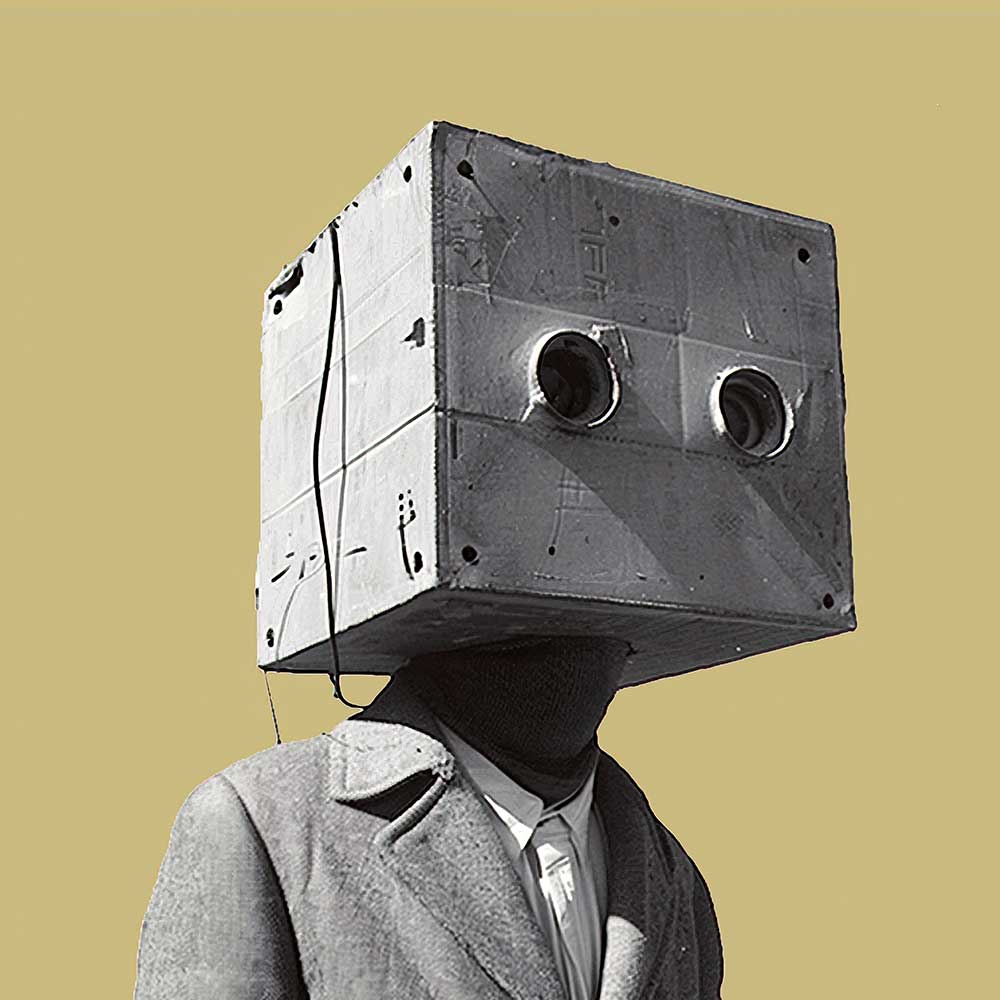
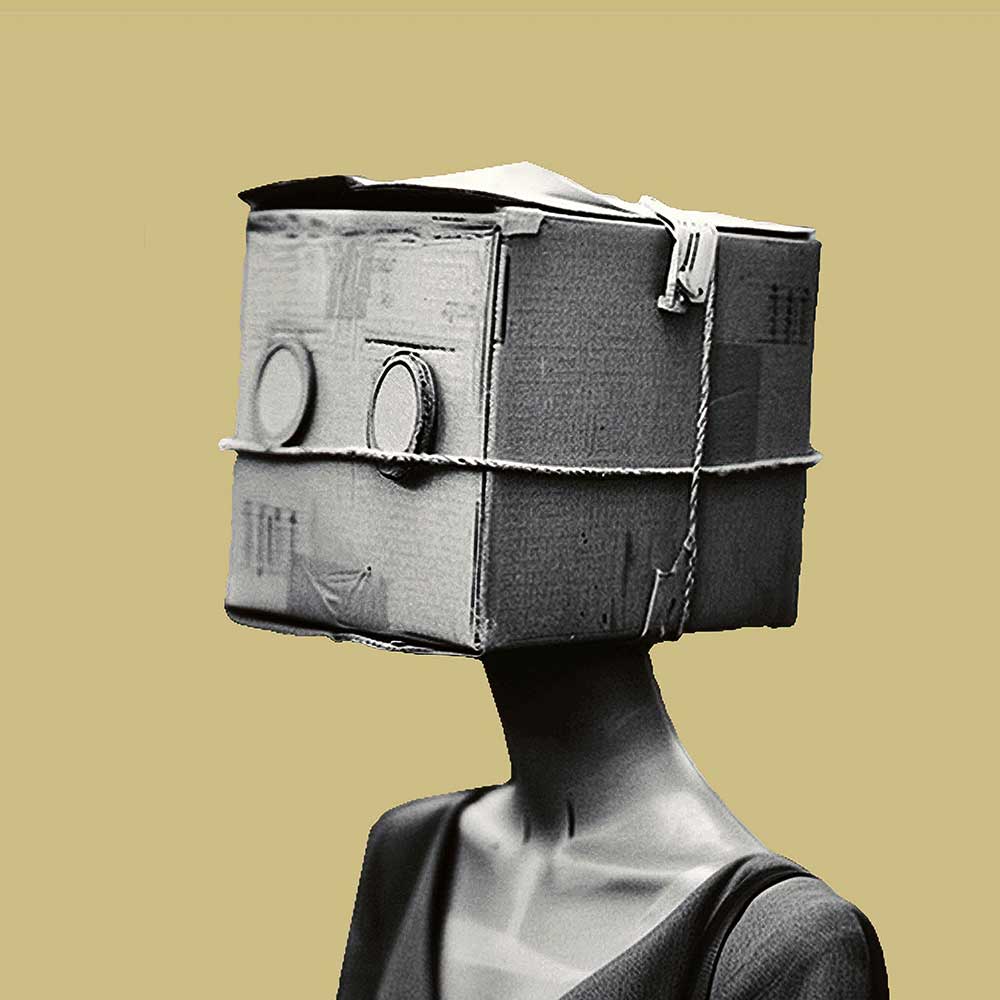
Photosatriani
I am a curious of life with idealistic tendencies and a fighter. I believe that shadows are the necessary contrast to enhance the light. I am a lover of nature, of silence and of the inner beauty. The history of my visual creations is quite silent publicly but very rich personally, illuminated by a series of satisfactions and recognitions, such as: gold and silver winner in MUSE Awards 2023; Commended and Highly Commended in IGPOTY 2022/19/18, honorable mention in Pollux Award 2019; selected for Descubrimientos PhotoEspaña (2014), Photosaloon in Torino Fotografia (1995) and in VIPHOTO (2014). Winner of Fotonostrum AI Visual Awards 2024. Group exhibitions in: Atlántica Colectivas FotoNoviembre 2015/13; selected for the Popular Participation section GetxoPhoto 2022/20/15. Exhibitions in ”PhotoVernissage (San Petersburgo, 2012); DeARTE 2012/13 (Medinaceli); Taverna de los Mundos (Bilbao); selected works in ArtDoc, Dodho, 1X. A set of my images belongs to the funds of Tecnalia company in Bilbao, to the collection of the "Isla de Tenerife" Photography Center and to the Medicos sin Fronteras collection in Madrid. Collaborator and interviewer for Dodho platform and in Sineresi magazine [Website]



